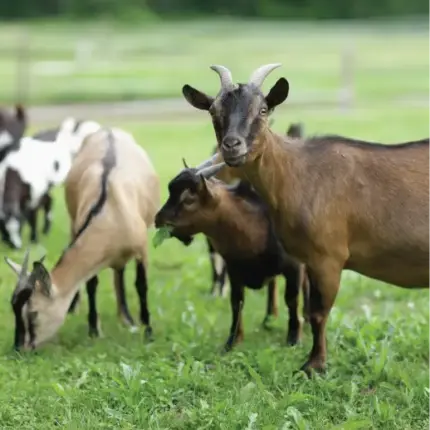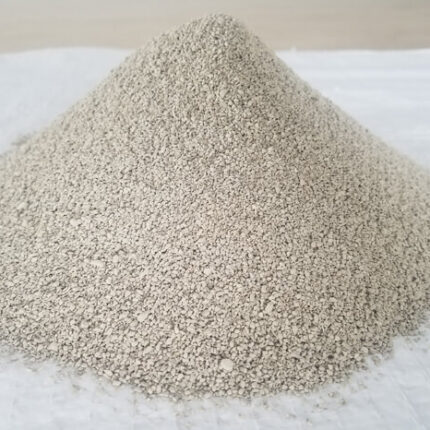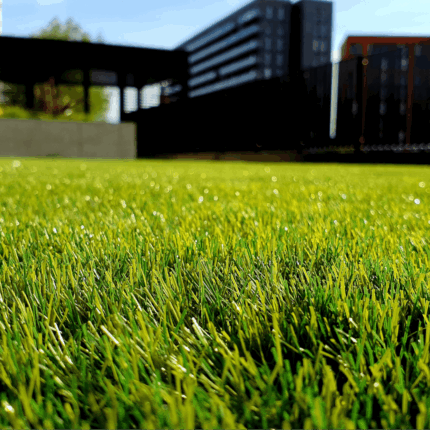Top rated products
-
 Goat Pasture & Forage Mix - Transitional
$49.99 – $209.99Price range: $49.99 through $209.99
Goat Pasture & Forage Mix - Transitional
$49.99 – $209.99Price range: $49.99 through $209.99
-
 Am 120 Standard Mycorrhizal Inoculant
$74.99
Am 120 Standard Mycorrhizal Inoculant
$74.99
-
 Triblade Elite Bermudagrass Lawn Mix
$119.99 – $499.99Price range: $119.99 through $499.99
Triblade Elite Bermudagrass Lawn Mix
$119.99 – $499.99Price range: $119.99 through $499.99
Winter Forage Crops
Annual Winter Forage Crops
Annual winter forage crops can be the perfect option as the season starts to cool down. Read on to learn why you should consider winter forage crops and which are the best to plant.
|
Cold Tolerance |
Annual winter forage crops are specifically designed to withstand cold temperatures, allowing them to grow and thrive during the winter months when other grasses go dormant. |
|
Rapid Growth |
These crops establish quickly, ensuring that there’s ample forage available for livestock when warm-season pastures are no longer productive. |
|
Nutrient-Rich |
Winter forage crops provide a high level of nutrition, helping livestock maintain their energy and health during colder months when forage quality from other sources may decline. |
|
Erosion Control |
Winter grass seed helps cover and stabilize the soil during winter, reducing the risk of erosion and improving soil health for future planting. |
Best Winter Forage Crops
- Annual Ryegrass:
Annual ryegrass is one of the most popular winter forage crops due to its rapid growth and ability to provide high-quality forage throughout the cooler months. It’s highly palatable to livestock and offers excellent nutritional value. - Winter Wheat:
Winter wheat is a dual-purpose crop that provides both forage for livestock and grain harvest in the spring. It’s cold-hardy and offers excellent ground cover, making it a valuable choice for erosion control. - Oats:
Oats are another fast-growing winter forage crop that can be planted late in the season to provide a valuable source of forage for livestock. They are highly digestible and offer substantial nutritional benefits. - Barley:
Barley is a versatile winter forage crop that grows quickly and provides excellent forage for grazing livestock. Its cold tolerance makes it ideal for planting in late fall.
What are the Best Winter Forage Crops?
Growing Conditions for Winter Forage Crops:
- Planting Time:
Winter forage crops are best planted in the early fall, allowing the plants to establish before the onset of cold weather. These crops are designed to grow during the winter, filling in the gap left by summer forages. - Soil Requirements:
Most winter forage crops perform well in a variety of soils, but well-drained soil with moderate fertility will provide the best results. Adding organic matter or fertilizer can help improve crop growth. - Irrigation:
In areas where rainfall is insufficient, occasional irrigation may be required to ensure optimal growth, especially during the establishment phase.
Winter Grass Seed Options
- Annual Ryegrass Seed:
A reliable option for winter forage, annual ryegrass seed is fast-growing and offers lush, green forage throughout the colder months. - Winter Wheat Seed:
Winter wheat seed is an excellent choice for those looking to combine grazing with grain production. This versatile crop provides grazing in the winter and a grain harvest in the spring. - Oat Grass Seed:
Oat grass seed is perfect for those seeking a forage crop that grows quickly and provides nutritious feed for livestock in the colder months. - Barley Grass Seed:
Barley grass seed is another top choice for winter grazing, offering cold tolerance and rapid growth for fall and winter planting.
Taking a look at the best winter grass seed options
Why Choose Annual Winter Forage Crops?
Choosing winter forage crops ensures your livestock has a continuous supply of nutritious forage during the colder months. By planting winter grass seed, you can reduce the need for supplemental feed and help maintain soil health through ground cover and erosion control. Winter forages are an efficient and sustainable way to manage your livestock’s nutritional needs when warm-season pastures are unavailable.
Frequently Asked Questions about Winter Forage Crops
Winter forage crops are best planted in early to mid-fall to allow for proper establishment before the cold weather sets in.
While many winter forages can thrive on rainfall alone, occasional irrigation may be necessary in dry climates, especially during establishment.
Annual ryegrass and winter wheat are both excellent choices for erosion control due to their fast growth and ability to cover and stabilize the soil.

